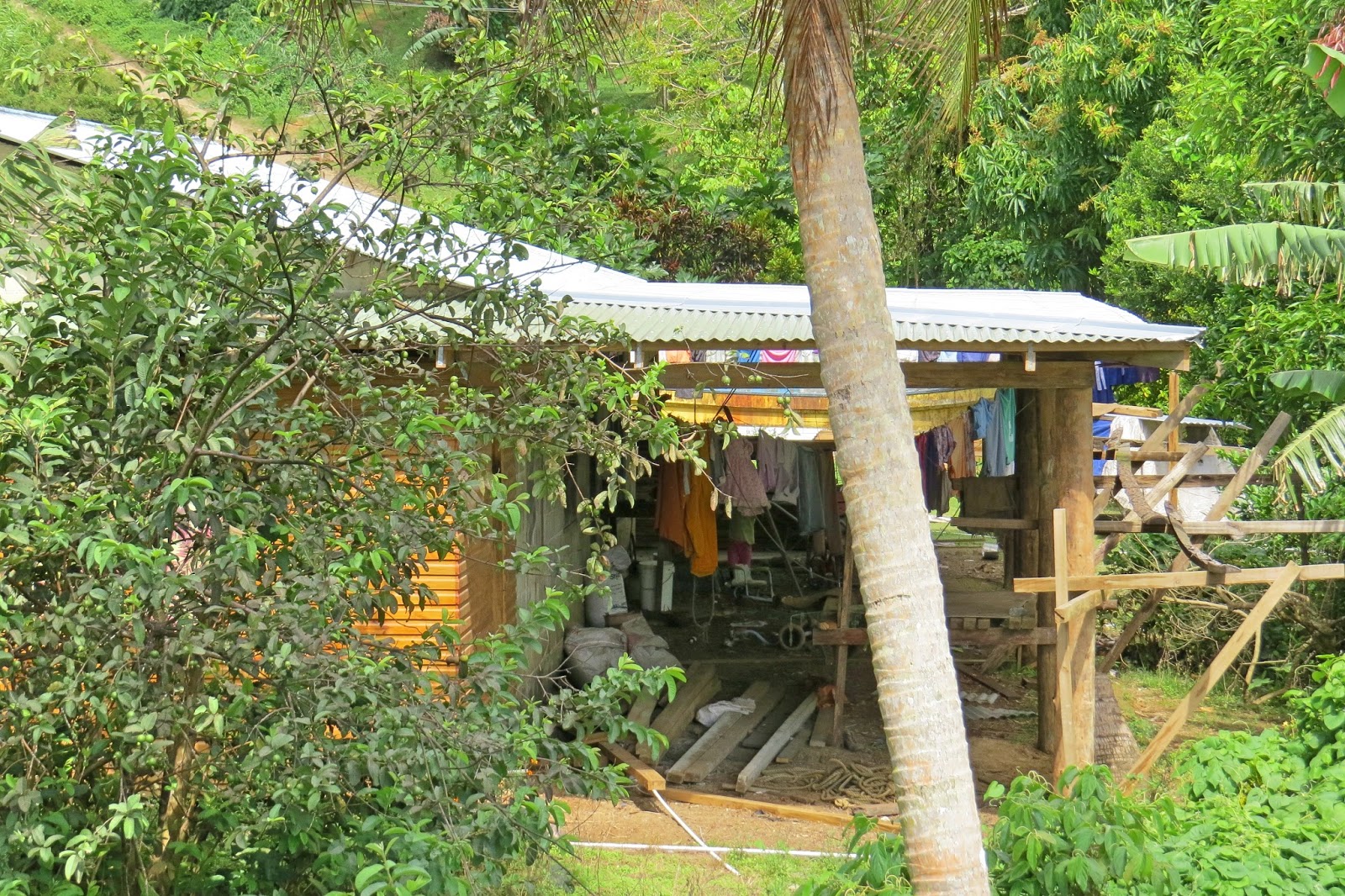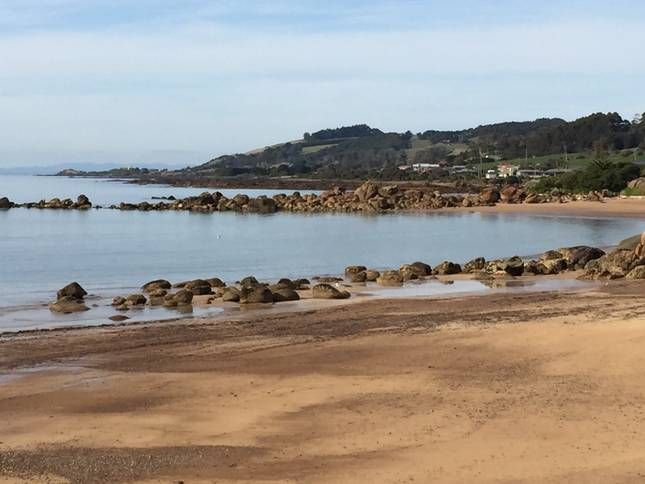Today’s late posting is a result of a poor wifi signal which has made posting photos and line spacing difficult. We apologize for the delay.
 |
| This duck’s unusual crown caught our attention. He seemed proud of his facial characteristics. |
Once we arrived at Kusma’s house to purchase the eggs, we waited outside taking photos of the various chickens, roosters, and ducks wandering about her front yard.
We weren’t certain if there were more chickens at the back of the house. We preferred not to intrude asking to see more. There were plenty of chickens, gathering around our feet, pecking here and there, seemingly content and busy in their simple chicken lives.
The several roosters began to crow, taking turns at the spotlight. One, in particular, appeared to be the “cock of the walk” strutting about with a sense of confidence we’d only seen in lions, not necessarily in chickens. It was highly entertaining.
 |
| Not only were there chickens wandering about the yard, but there were also a few ducks. |
A dear friend of mine in Minnesota lived five minutes from us. She had a well-equipped chicken coup, kept suitably warm in the frigid winters. When I’d visit, she’d holler, “Chickens!” They’d come running, making me howl. She also had a few adult goats, two sisters, that would sit on our laps while in lawn chairs in the garden, while we chatted with cups of coffee in hand. Even then, I couldn’t get enough of animals, regardless of their species.
Kusma came outside and Ratnesh introduced us. She spoke a little English but not much. “The overwhelming majority of Indo-Fijians speak Fiji Hindustani or Fiji Hindi. This language developed out of contact between speakers of different dialects of Hindi/Urdu (one of the native languages of India) and their bosses on the colonial-era sugar plantations.”
She shook our hands with a hint of trepidation, looking at Ratnesh, a relative whom she knew well, for his approval. He nodded assuring her we were good. In as few words as possible, I explained we’d be staying here in the neighborhood of Korovesi, (comparable to a suburb) for a total of three months and would like to buy her eggs regularly if that was acceptable to her.
 |
| The chickens were nibbling on something in this tin bowl. The contents could certainly be a determining factor if the eggs would be considered organic, although they wouldn’t be “certified” by any means, a process not done here in Savusavu. |
As best as I could, I explained that Usi would pick them up for us in the future with the ride too difficult in a vehicle. We didn’t see any cars or trucks in the yards of the houses in that mountainous difficult-to-reach area.
I kindly asked for four dozen eggs, for now, knowing we still had the rough walk back up to the car and Ratnesh insisted he carry them. We’d brought along the cloth bag we purchased in Kenya that has traveled well, laundering it on occasion and happy it’s worn so well for a $2 purchase so long ago. The four dozen eggs fit perfectly into the bag.
She charged us FJD $20, USD $9.20 which translates to FJD $5.00, USD $2.40 a dozen. Not too bad a price for free-range and antibiotic-free eggs. She may charge the local less, but we were content to pay her whatever she deemed fair.
 |
| It looks as if a pair of shorts fell off the clothesline and one of the birds dragged it away from the line. |
Whether or not her eggs could have been classified as organic under other circumstances remains to be seen, as described below, for example from the USDA (not necessarily our favorite government entity):
“The label USDA Organic is your best bet when buying chicken or eggs. In terms of chicken, it means that your bird has been fed a vegetarian diet that is also organic and therefore does not include any GMOs (genetically modified organisms) or chemical pesticides.
It also means that the birds must be raised according to organic standards within two days of being born, are not fed any hormones, antibiotics, or drugs, have access to outdoor space, clean drinking water, and be raised “per animal health and welfare standards” according to the USDA.”
 |
| The roosters were competing for crowing rights, each taking his turn. |
We highly doubt Kusma’s chickens are given hormones, antibiotics, or any other types of drugs. We witnessed the free-roaming aspect when we arrived unannounced to a few dozen chickens and several ducks wandering in the front yard. We noticed a faucet with spring water provided for the chickens and the household. There’s no city water in the area. (We’ve had no problems drinking the spring water, although if in town, we’d only drink bottled water).
We also noticed a large tin bucket filled with some type of feed. We can’t assume the feed in that bucket was non-GMO. But, pesticides aren’t used in Fiji or, for that matter, in many other parts of the world. Most free-range chickens are fed some type of feed when the immediate surroundings may not provide enough nutrients to produce good eggs. (Kusma’s yard had been well pecked to the bare soil in spots).
We observed this with feral chickens in Kauai, in the thousands or more, skinny and malnourished living off the land, still able to produce offspring and survive. Residents we spoke with explained that many have tried catching and cooking them only to find they’re tough and relatively inedible.
 |
| Homes with tin roofs, many worn and old, maintained to the best of the ability of the owners over decades. |
Perhaps the bucket a few of the chickens were nibbling from contained Kusma’s leftover food scraps for all we know. Goodness, when I cook each day, I have enough leftovers to feed that many chickens bits of meat and vegetable scraps. We didn’t ask. Many local people don’t have a lot of resources to purchase chicken feed and may easily manage off of what is available in their daily lives or growing under their feet.
 |
| These large pots in the window of the hardware store inspired me to stop in to look for a kitchen utensil. |
When checking out, I called Ratnesh to pick us up. With disappointment in his voice, he explained he wouldn’t be able to pick us up for another 25 minutes. He was picking up a customer for a ride to the airport.
We’d told him he’s free to take other fares after dropping us off, not asking him to wait for us. We’d anticipate the shopping would take longer but having gone shopping only four days earlier we needed only a dozen items at the grocer. Thus, we called him 30 minutes earlier than he’d expected.
After paying for our food, the clerk told us we could leave our food inside in the trolley inside the AC store while we waited. The trolleys aren’t allowed outside nor could they make it down the several steps to the street. Hands-free, we stood outside the building for 25 minutes waiting for Ratnesh.
Easily entertained while people-watching, the time passed quickly. I ran across the street to a hardware store while Tom stayed behind. Would they carry a “turner” (spatula) used for flipping eggs? They had some huge pots in the window as shown in the above photo. Surely, they must have kitchen wares.
 |
| Houses in the surrounding area. |
When Ratnesh returned we head directly to see Helen at Fiji Meats, who was holding two roasted chickens for us after we’d called earlier in the day with the request. They’re delicious, wheat-free, and easier to purchase already roasted rather than using the portable atop our kitchen counter, making the house hot on these hot humid days.
Once back home by 4 pm, I was busy until dinnertime, washing all the veggies and attempting to make room in the tiny refrigerator for everything we’d purchased. The fridge and freezer are the same sizes we had in Trinity Beach and many other locations. I’m getting good at this task, somehow managing to fit everything inside, fresh washed and ready to prepare.
Yesterday afternoon, I washed the outside of two dozen of Kusma’s eggs in a bowl of lukewarm water with a little sink soap. Getting the exterior clean is important when cracking open raw eggs to avoid contamination.
Taking a better part of the afternoon, I cooked four packages of streaky bacon (10 slices per pack) to make another batch of Tom’s favorite breakfast quiche (crust-less), dicing each slice of bacon into bite-sized pieces, hand grating the cheese, dicing and precooking the onions. Cracking the 24 cleaned eggs, I was pleased not to find a single bad egg.
 |
| Unusual marking on this duck gave him the rights for the main photo today. |
With the leftover cooked bacon I’d diced, I made the Ghee, Garlic, and Bacon Green Beans with lots of spices. I’d carefully washed the green beans but when done cooking the dish while placing it into a container, I spotted a worm I’d cooked in the pan while sautéing the beans. I flicked it away and continued on. We reheated a batch to have with dinner last night and will do so again tonight.
I feel like a farm wife in some ways. Although I don’t clean much, other than after cooking and only hand wash kitchen towels and my underwear, I find myself spending the better part of each afternoon preparing food that may have already been prepared when purchasing it years ago in the US.
The only thing missing from being a real farm wife is the mashed potatoes, homemade bread, and of course, the apple pie with hand-rolled crust. I made those in our old lives prior to eating this way. Instead, now, we have mashed cauliflower on occasion, low carb grain free muffins, and coconut cookies for dessert. No complaining here. It’s all good.
For those of our readers disinterested in food, we apologize for this extended period of stories about purchasing and preparing local foods. For now, we’ll move on to other topics. Thanks for hanging with us.
For the foodies out there, we often receive comments and support for our discussions about food shopping and prep particularly from those attempting to adopt a more healthy manner of eating. Thank you all for the positive feedback.
Have a fun-filled safe weekend, treasuring every moment. It’s raining again today. So it goes…life in the tropics.
Photo from one year ago today, September 27, 2014:
 |
| Rough seas and all, the Captain’s Club party aboard the ship carries on as we continued on course to Hawaii. For more details, please click here. |
























































































